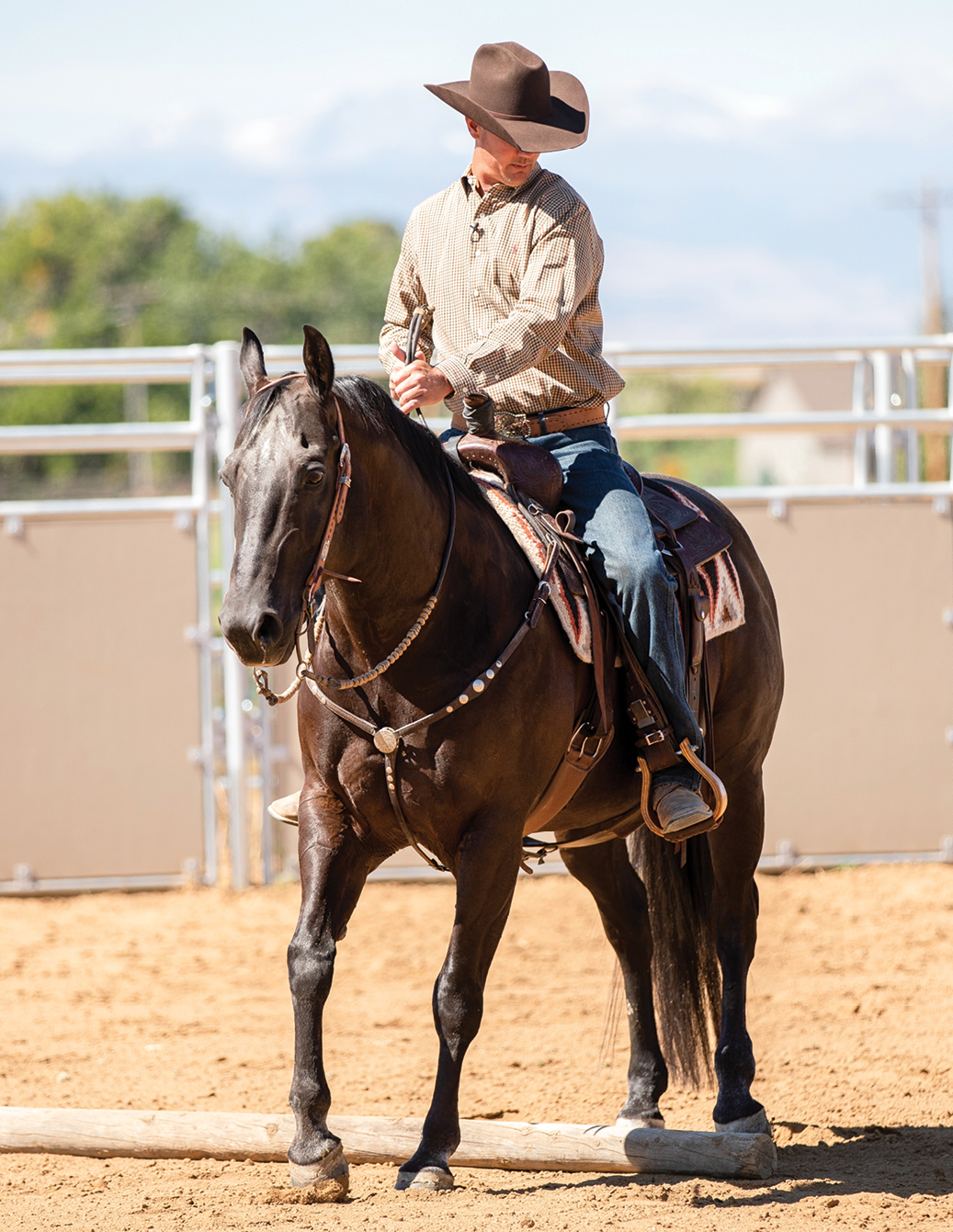Being able to effectively sidepass your horse is a must when you’re competing in an event like ranch trail, but this skill set can also come in handy if you’re out on a trail or you need to move your horse toward or away from an obstacle on the ranch, like a gate.
But before you attempt to sidepass your horse over a log, you need to make sure you have control of his shoulders and hips, and you’re able to perform turns on the haunches and forehand. To execute this maneuver successfully, you need to be able to move the front end independently from the hind end, but you also need to be able to move both body parts at the same time. Once you can do that, it’s time to introduce your horse to this sidepass drill.
One
After I can sidepass my horse in an open area, I set up two logs in an L shape and have my horse straddle it. When I look down, my log should be a little behind my heel or spur and in front of my back cinch to help me avoid getting too close to the log and hitting it, which is a penalty in this judged event.
Horses can be claustrophobic by nature, and if my horse has never been over a log obstacle before, I don’t want to overwhelm him, so I let him sit still over the log and then side pass him off it until I think he’s comfortable standing over the logs.

Two
I ask my horse to sidepass to the right, but only move a couple of steps at a time before stopping and letting him settle. I don’t want him to think he has to do this obstacle all in one motion. I want him to be confident in his ability, but I also want him to sit quietly and wait until I ask him to take a step. I keep my left calf against my horse’s side and ask him to move his front end and hind end simultaneously while staying square in the saddle.

Three
If my horse is at an angle and his front end starts to lead, I slide my left foot back an inch or two and ask him to move his hip over. I keep my right leg forward to hold the shoulder still until his hip gets caught up with where his shoulder is, and then go back to asking him to yield off my leg and move his whole body all at once.
Being subtle is key in this correction. If you use too much leg, you’re going to get too much hip and overcorrect your original correction. Slow down and be soft in your hand and leg cues.

Four
When I reach the corner of the two logs, I rock my horse back a step to help him avoid hitting the peak of the L with his hind legs. I lift my hand straight up to hold his shoulders square, bring my right leg forward to block the shoulders from moving, and move my left leg back to push his hips around the corner.

Five
Sitting square in the saddle throughout all of the sidepass is important, but it’s extremely necessary during this corner. If you start leaning from one side to the other trying to see where your horse’s feet are or where the log is in relation to your horse’s feet, you’re going to throw him off balance, and he’ll be more likely to hit a log trying to regain his balance and keep you underneath him.
You can look for the log to see where it’s at, but keep your weight even in the saddle, and only look with your eyes.

Six
Once I’ve cleared the corner, I straighten my horse out, rock him forward a step so the log is back to being between my spur and my back cinch, and ask him to move his hip and shoulder simultaneously.
During this whole obstacle, I’m taking a few steps at a time and then asking my horse to stop and stand still. I don’t want him to rush through this obstacle in the show pen, so I practice at a slower speed to ensure he’s listening to my cue instead of going on autopilot.

Seven
As a horse nears the end of the log, he’s more likely to start anticipating the end of the sidepass. To avoid anticipation and to keep my horse’s attention on me and not the obstacle, I like to sidepass off the log and go a few more steps past it before stopping. Once I complete the obstacle, I let him stand still and relax before moving on to the next maneuver.







